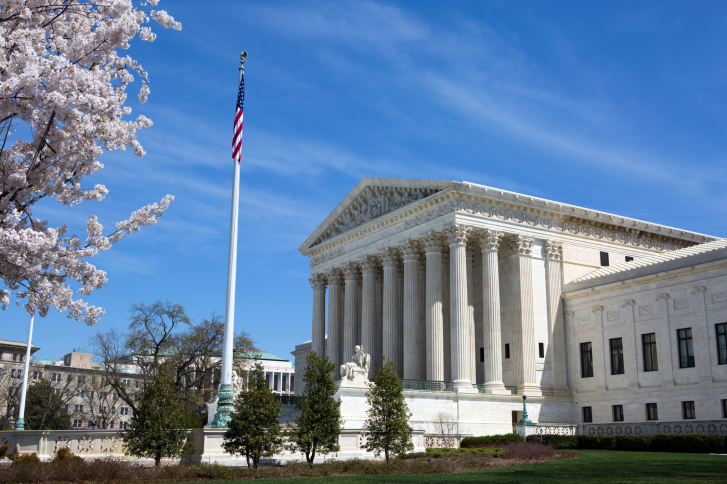Rep. Nancy Pelosi (D-CA), the new Speaker of the U.S. House of Representatives, pledged to remove in the first week of the congressional session the current ban on federal negotiation of drug pricing for Medicare beneficiaries.
As the single largest purchaser of drugs for Medicare beneficiaries–50 percent of the drug market–the federal government is in a position to negotiate rock-bottom prices for prescription drugs. But before Congress forges ahead to fix the current drug pricing system, we should ask whether it’s broken.
It’s not.
Fierce Price Negotiation
Medicare beneficiaries already benefit from drug prices that have been fiercely negotiated by their Part D private insurance plans.
“We are seeing large-scale negotiations with drug manufacturers, but they are conducted by private drug plans, not by the government,” Michael Leavitt, U.S. Secretary of Health and Human Services and the president’s point person in opposing the move toward government negotiations, told The New York Times on November 13.
Those insurance companies come to the table with phenomenal negotiating capabilities. About 75 percent of the 38 million Medicare beneficiaries are covered by just 12 Part D plans. That means a few large carriers dominate the market.
In addition to senior citizens, those carriers also provide coverage for millions of people under the age of 65 through the private sector. That’s clout.
Stable Prices
How expensive are seniors’ Part D premiums?
“The average [projected] monthly premium of $24 for 2007 is the same as in 2006,” stated Leslie Norwalk, acting director of the federal Centers for Medicare and Medicaid Services (CMS) in a November 13 news release. That rate stability is almost unheard of in the health insurance industry.
In fact, the discount drug prices already negotiated stunned the government actuaries charged with predicting health care spending last year.
According to the annual report issued in February 2006 by the U.S. Department of Health and Human Service’s Office of the Actuary, “compared with our previous projection, our assumption regarding the level of discounts and rebates in 2006 has changed from a 15 percent discount to 27 percent.”
New budget proposals detailing health care cost projections will be sent to the president’s office this month for consideration in the 2008 budget.
More Coverage
In addition, the new Part D drug benefit means over 90 percent of Medicare beneficiaries now have comprehensive drug coverage, compared with 59 percent before its inception, according to a study released in September by the Lewin Group, an independent health and human services consulting firm based in Falls Church, Virginia.
Seniors are clearly better off than before Part D, and they are paying a fair premium for the product.
The federal government could force drug prices for some people down further. In Medicare, Medicaid, and the Veterans Administration, the federal reimbursement rates are always lower than private plans’.
“Governments do not negotiate prices,” explained Ken Johnson, vice president for communications at the Pharmaceutical Research and Manufacturers of America (PhRMA), the drug industry’s lobbying group, “they dictate them.”
As a result, when seniors get reduced-price drugs, pharmaceutical companies make up the difference by charging everyone else more.
Reduced Research
At some point, industry observers note, lowball drug prices go beyond cutting any perceived “fat” out of the pharmaceutical industry. Nevertheless, many people think drug companies can afford to trim their profit margins or cut advertising budgets.
In a November 25 story, Robert Hayes, a consumer advocate and president of the Medicare Rights Center, told the Washington Post, “It only makes sense that if the [drug] industries do less well, the taxpayers and the consumers will do better.”
Personally, I wouldn’t mind fewer TV ads for erectile dysfunction drugs, but marketing sells drugs, so ad budgets won’t be cut. Furthermore, ad budgets are a drop in the bucket compared to the money drug companies spend on research and development.
“In 2005, pharmaceutical companies invested more than $51 billion in R&D and $11.4 billion on marketing and promotion,” Johnson said. If the government controls drug prices, the industry will likely be forced to cut back on research and development of new drugs.
Life-Changing Benefits
According to a June 2006 Kaiser Family Foundation report, the average individual uses 12 prescription drugs annually. Some congressmen want to paint the pharmaceutical industry as an evil empire, but life-changing drugs have affected many of their constituents.
Cancer and heart disease patients are living longer and better lives because of such drugs. Desperate families contending with mental illness see their loved ones’ futures brightening dramatically because of new medications. Aging baby-boomers hope Alzheimer’s research will yield results in time for their care.
It is difficult to contemplate how different our lives would be if drug development were slowed.
Would federal control of drug prices really threaten drug development? According to a study released in November by the Manhattan Institute, a public policy think tank in New York City, government negotiation could lower drug prices by 22 percent, but “would result in a loss of between six and 12 new medicines a year.”
Moreover, a December 18 brief from the National Center for Policy Analysis in Dallas says government negotiation may not lower drug prices at all.
Price of Innovation
We have only to look abroad to see what happens when the government takes over the drug and health care systems. Eli Lilly Public Policy Manager Tracy Sims reports, “up until the 1970s, European firms developed the majority of new medicines sold globally. But by the 1990s, the U.S. was developing more new medicines than Europe. In fact in 2003, eight of the world’s top-10 selling drugs originated in the U.S.”
Like most Americans, I resent the fact that I pay more for the same drug than people in other countries. I want to pay only my fair share.
But doing so may cost more in the long run. I’m not willing to forego the stents and medications that saved my sister’s life two years ago when she had a massive heart attack at age 59. I’m not willing to forego the medication that allows my disabled child to live a normal life.
Like most families affected by a “wonder drug,” I will pay more than my fair share to maintain innovative drug development.
Laura Clay Trueman ([email protected]) is executive director of the Coalition for Affordable Health Coverage and senior director of Jefferson Government Relations, LLC.
For more information …
“Health Spending Projections Through 2015: Changes on the Horizon,” by Christine Borger et al., Health Affairs, February 2006, http://content.healthaffairs.org/cgi/content/abstract/hlthaff.25.w61
“Success of Drug Plan Challenges Democrats,” by Lori Montgomery and Christopher Lee, Washington Post, November 26, 2006, http://www.washingtonpost.com/wp-dyn/content/article/2006/11/25/AR2006112500919.html
“Beneficiary Choices in Medicare Part D and Plan Features in 2006,” released by the Lewin Group on September 13, 2006, is available through PolicyBot™, The Heartland Institute’s free online research database. Point your Web browser to http://www.policybot.org and search for document #20363.
Also available through PolicyBot™:
“Prescription Drug Trends,” Kaiser Family Foundation, June 2006, document #20364
“The Human Cost of Federal Price Negotiations: The Medicare Prescription Drug Benefit and Pharmaceutical Innovation,” Benjamin Zycher, the Center for Medical Progress at the Manhattan Institute, November 2006, document #20365
“Medicare: Negotiated Drug Prices May Not Lower Costs,” Alain Enthoven and Kyna Fong, National Center for Policy Analysis, December 18, 2006, document #20366



